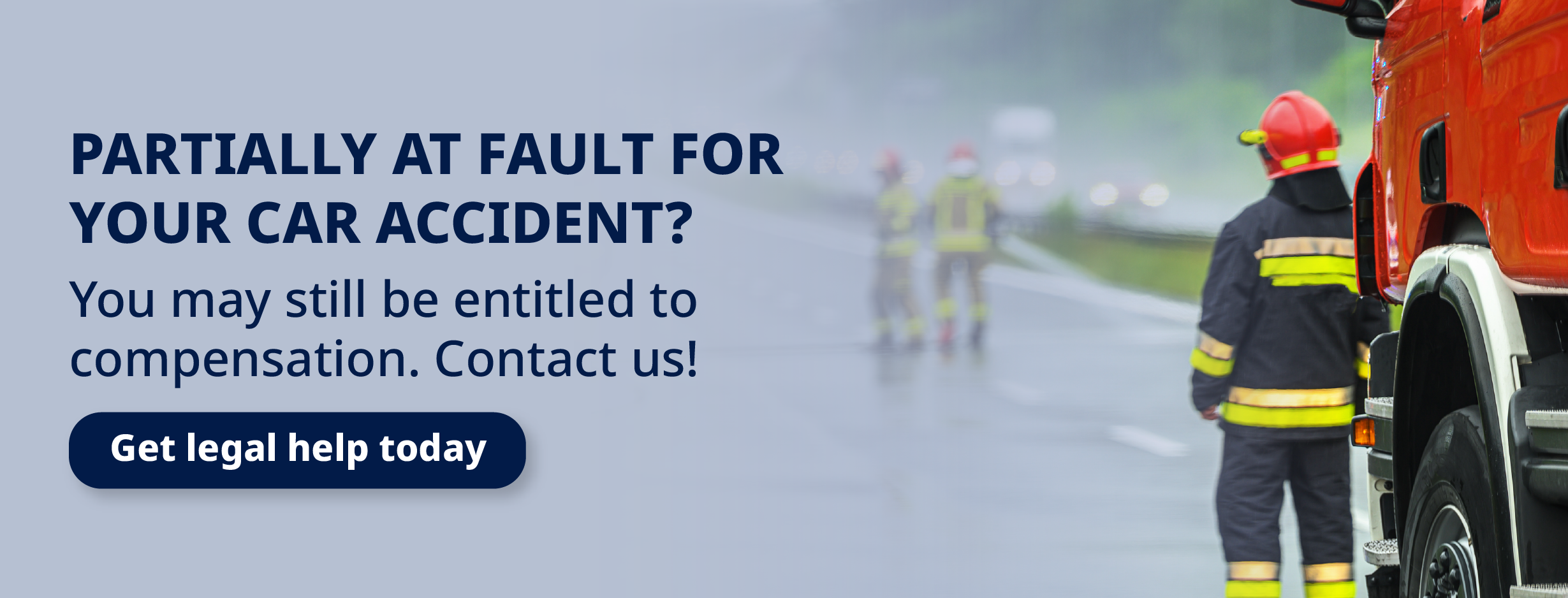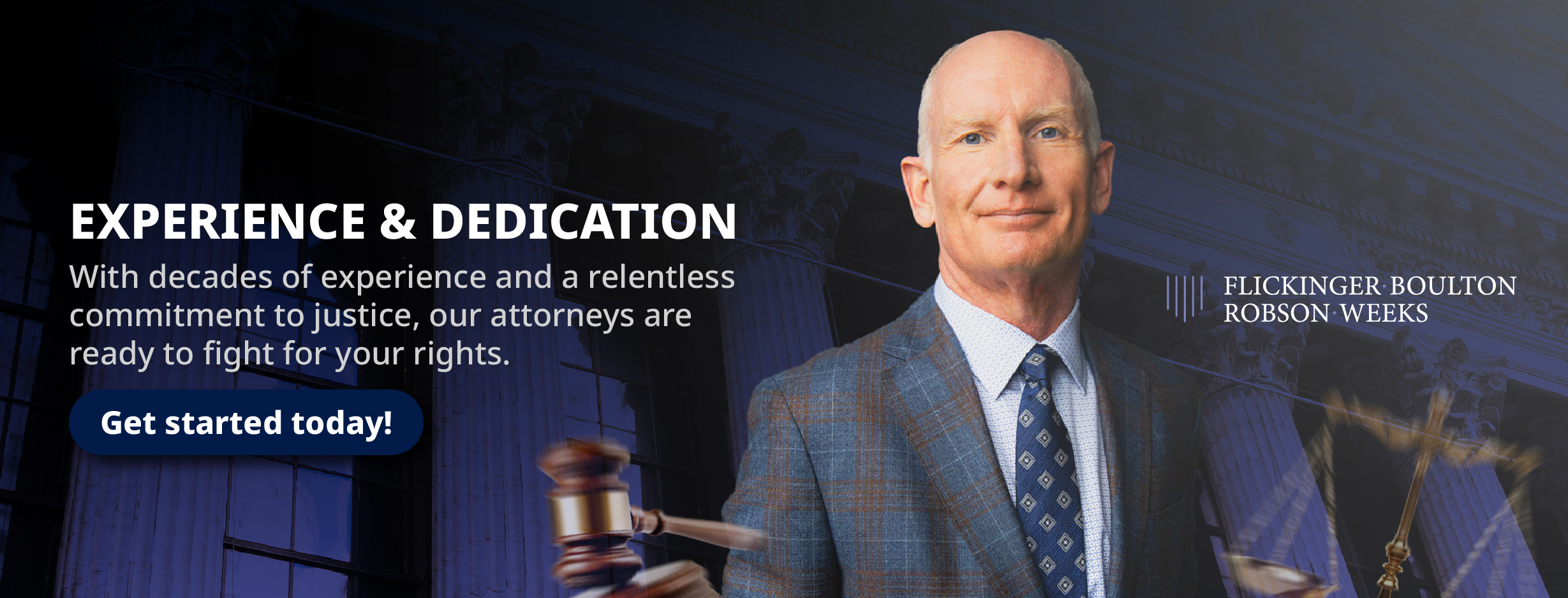When a car accident occurs, determining who is at fault is a critical factor in deciding how much compensation an injured victim can receive. Utah follows a modified comparative fault system, meaning that even if you share some responsibility for the accident, you may still be entitled to recover damages if you are found to be less than 50% at fault.
However, your compensation will be reduced based on your percentage of fault. At Flickinger Boulton Robson Weeks, our experienced Utah car accident lawyers understand how insurance companies use comparative fault to limit payouts. We are here to protect your rights, challenge unfair fault assessments, and fight for the maximum compensation you deserve.
If you’ve been injured in an accident, we’ll help you navigate Utah’s comparative fault laws and build a strong case for your claim.

Comparative negligence is a legal doctrine that assigns fault among multiple parties involved in an accident. It allows for the division of liability based on each party’s degree of fault, ensuring that each injured person is compensated proportionally for their damages.
This approach is particularly important in personal injury cases, where more than one party might share responsibility for an accident.
Comparative negligence determines how much each party’s negligence contributed to an accident. Instead of following a strict all-or-nothing rule, this system assigns a percentage of fault to each party involved. For example, if you are found to be 30% responsible for an accident, any damages awarded to you will be reduced by that percentage.
This method ensures that even if you are partially at fault, you may still recover compensation, albeit reduced by your share of the blame.
Under comparative negligence, determining liability involves carefully analyzing the actions of all parties involved. Insurance companies and courts review evidence such as witness statements, accident reports, and expert testimonies to assess each party’s contribution to the accident. Key factors include:
By evaluating these aspects, the degree of negligence is quantified, and the total fault is divided among those involved.
Utah follows a modified comparative fault system. Under this rule:
This modified system encourages fairness by ensuring that even if a party’s negligence played a role, they can still seek compensation as long as their contribution does not dominate the accident’s cause.
Understanding comparative negligence is crucial for accident victims. It affects the outcome of your claim in several ways:
Your compensation is directly reduced by your percentage of fault.
Demonstrating that another party’s negligence played a more significant role in the accident is essential.
Knowledge of comparative negligence influences settlement discussions, as insurers will often use any evidence of shared fault to lower offers.
Comparative negligence is a balanced approach to handling fault in accidents, ensuring that all parties are held responsible according to their actual degree of involvement. Understanding this principle is vital for Utah accident victims, as it directly impacts the compensation you can recover.
Working with an experienced attorney can help you navigate these complexities, gather compelling evidence, and challenge any attempts by insurers to unfairly reduce your claim.
By fully understanding comparative negligence, you can better advocate for your rights and achieve a fair resolution in your personal injury case.

Utah follows a modified comparative fault rule, directly impacting how much compensation an accident victim can recover. This law ensures that fault is fairly distributed among all involved parties, meaning that if you are partially responsible for an accident, your compensation may be reduced accordingly.
Understanding how this law works can help you navigate your claim and protect your right to fair compensation.
Under Utah’s modified comparative fault system:
For example, if you are awarded $100,000 in damages but are found 30% responsible, your compensation will be reduced by 30%, leaving you with $70,000. However, if you are found 50% or more responsible, you will receive nothing.
Insurance companies often use Utah’s modified comparative fault rule to reduce payouts. They may argue that you share a significant portion of the blame to minimize their financial responsibility.
Common tactics include:
This is why it’s essential to gather strong evidence, such as photos, witness testimony, and expert analysis, to counter these arguments and ensure you are not unfairly assigned blame.
Since insurance companies know that being assigned 50% or more fault means zero compensation, they may use this as leverage during settlement negotiations. If an insurer can convince you that you share equal or majority fault, they can avoid paying your claim entirely.
This is why accident victims should be cautious when speaking with adjusters and avoid admitting any fault without consulting an attorney.
To avoid unfair reductions in your compensation:
Utah’s modified comparative fault law significantly affects how much compensation you can recover after an accident. Because insurance companies often try to shift blame, it’s crucial to protect yourself by gathering evidence and working with a skilled attorney.
If you’ve been injured in an accident, an experienced lawyer can help ensure that you are not unfairly assigned blame and that you receive the full compensation you deserve.
Utah’s modified comparative fault rule affects how compensation is awarded when multiple parties share responsibility for an accident.
Below are examples of how this law applies in real-world scenarios and how fault is divided among drivers.
A driver waits at a red light on State Street in Salt Lake City when another vehicle crashes into them from behind. In most cases, the driver who rear-ends another car is at fault for failing to stop in time. However, if the front vehicle’s brake lights were not functioning, making it difficult for the rear driver to recognize they were stopped, the front driver could share liability under Utah’s comparative negligence laws.
This could impact how compensation is determined, as both drivers may be assigned a percentage of fault for the accident.
A driver is making a left turn at an intersection and collides with an oncoming vehicle. Typically, the left-turning driver must yield the right of way and is considered at fault. However, fault may be shared if the oncoming driver was speeding or ran a yellow/red light.
In a chain-reaction accident on the freeway, Driver A suddenly stops due to road debris, Driver B rear-ends them, and Driver C crashes into Driver B. Determining fault in multi-vehicle crashes is complex and may involve multiple parties.
If Driver B is found 40% at fault, Driver A 30%, and Driver C 30%, each driver’s compensation will be reduced by their respective percentages.
Comparative fault plays a crucial role in Utah car accident cases, as liability is rarely clear-cut. Even if a driver is partially responsible, they may still recover compensation, as long as their fault is under 50%.
Since insurance companies often try to increase a victim’s percentage of blame to reduce payouts, having an experienced attorney can help ensure fault is assigned fairly and compensation is maximized.
Proving liability after a car accident in Utah is crucial for securing compensation. Because Utah follows a modified comparative fault rule, the more evidence you have proving the other party’s negligence, the stronger your claim will be.
Below are key steps to proving liability under Utah law and ensuring you receive the compensation you deserve.
To hold another driver responsible for a car accident, you must prove negligence, meaning they failed to act with reasonable care. Under Utah law, proving negligence involves demonstrating:
If all four elements are present, the other party can be found liable for the crash.
You need clear and convincing evidence that the other driver was responsible to prove fault. Key forms of evidence include:
The more evidence you collect, the harder it will be for the other driver or their insurance company to deny liability.
In some cases, proving fault requires professional analysis. Professional witnesses can provide objective insight into how the accident occurred and who is responsible. Common expert witnesses include:
These testimonies add credibility to your claim, especially if the other party disputes fault.
Insurance companies often try to shift blame to reduce their payout. If they claim you were partially responsible, you can:
Present contradicting evidence (such as traffic camera footage or witness testimony).
Highlight inconsistencies in the other driver’s statement.
Have your attorney negotiate aggressively to counter lowball offers.
Since Utah’s 50% fault rule prevents recovery if you are found equally or more at fault, it’s essential to fight back against unfair blame assessments.
Proving the other party’s liability under Utah law requires a strong case built on evidence, expert testimony, and legal strategy. Insurance companies will often challenge fault, but having an experienced attorney can help protect your rights and ensure you receive the compensation you deserve.
If you’ve been injured in an accident, working with a skilled lawyer can make all the difference in proving liability and maximizing your recovery.
UTAH INJURY LAWYERS
Flickinger • Boulton
• Robson • Weeks
PROVO OFFICE
3000 N University Ave
Suite 300
Provo, UT 84604
SOUTH JORDAN OFFICE
10393 S. Temple Dr.
Suite 103
South Jordan, Utah 84095
OFFICE HOURS
Monday- Friday: 8AM-5PM
Saturday-Sunday: Closed
*Disclaimer: the information provided by this website is for informational purposes only and should not be considered legal advice or a substitute for competent legal counsel.
**SMS consent and contact phone numbers will not be shared or sold to third parties or their affiliates for any purpose.
© 2025 All Rights Reserved.